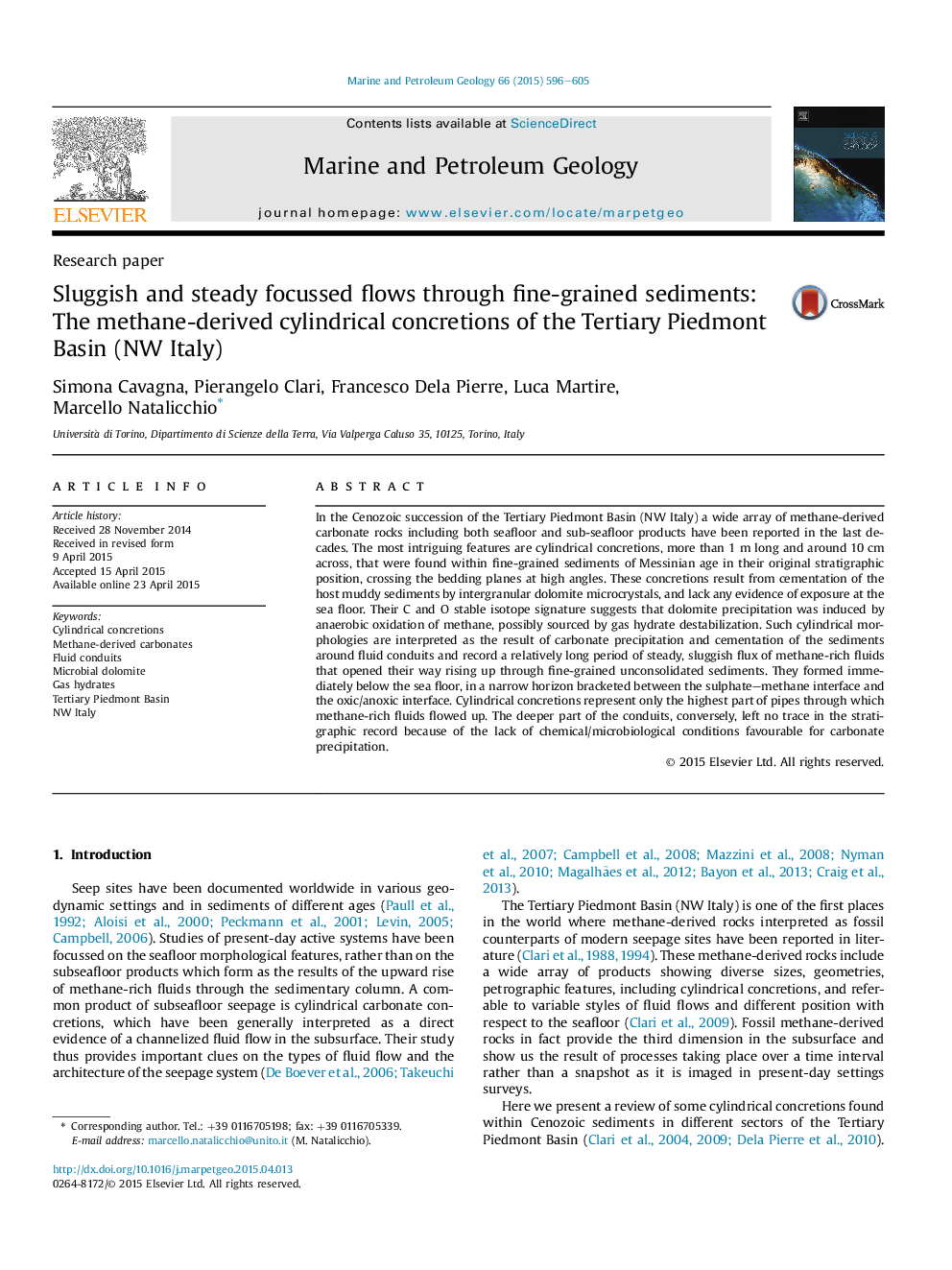| کد مقاله | کد نشریه | سال انتشار | مقاله انگلیسی | نسخه تمام متن |
|---|---|---|---|---|
| 4695551 | 1351616 | 2015 | 10 صفحه PDF | دانلود رایگان |

• Cylindrical concretions developed around ancient fluid conduits.
• They record steady, sluggish fluxes of methane-rich fluids through muddy sediments.
• They result from microbially-induced dolomite precipitation.
• They formed below the seafloor, between the SO4/CH4 and the oxic/anoxic interfaces.
• They preserve only the highest part of fluid conduits.
In the Cenozoic succession of the Tertiary Piedmont Basin (NW Italy) a wide array of methane-derived carbonate rocks including both seafloor and sub-seafloor products have been reported in the last decades. The most intriguing features are cylindrical concretions, more than 1 m long and around 10 cm across, that were found within fine-grained sediments of Messinian age in their original stratigraphic position, crossing the bedding planes at high angles. These concretions result from cementation of the host muddy sediments by intergranular dolomite microcrystals, and lack any evidence of exposure at the sea floor. Their C and O stable isotope signature suggests that dolomite precipitation was induced by anaerobic oxidation of methane, possibly sourced by gas hydrate destabilization. Such cylindrical morphologies are interpreted as the result of carbonate precipitation and cementation of the sediments around fluid conduits and record a relatively long period of steady, sluggish flux of methane-rich fluids that opened their way rising up through fine-grained unconsolidated sediments. They formed immediately below the sea floor, in a narrow horizon bracketed between the sulphate–methane interface and the oxic/anoxic interface. Cylindrical concretions represent only the highest part of pipes through which methane-rich fluids flowed up. The deeper part of the conduits, conversely, left no trace in the stratigraphic record because of the lack of chemical/microbiological conditions favourable for carbonate precipitation.
Journal: Marine and Petroleum Geology - Volume 66, Part 3, September 2015, Pages 596–605